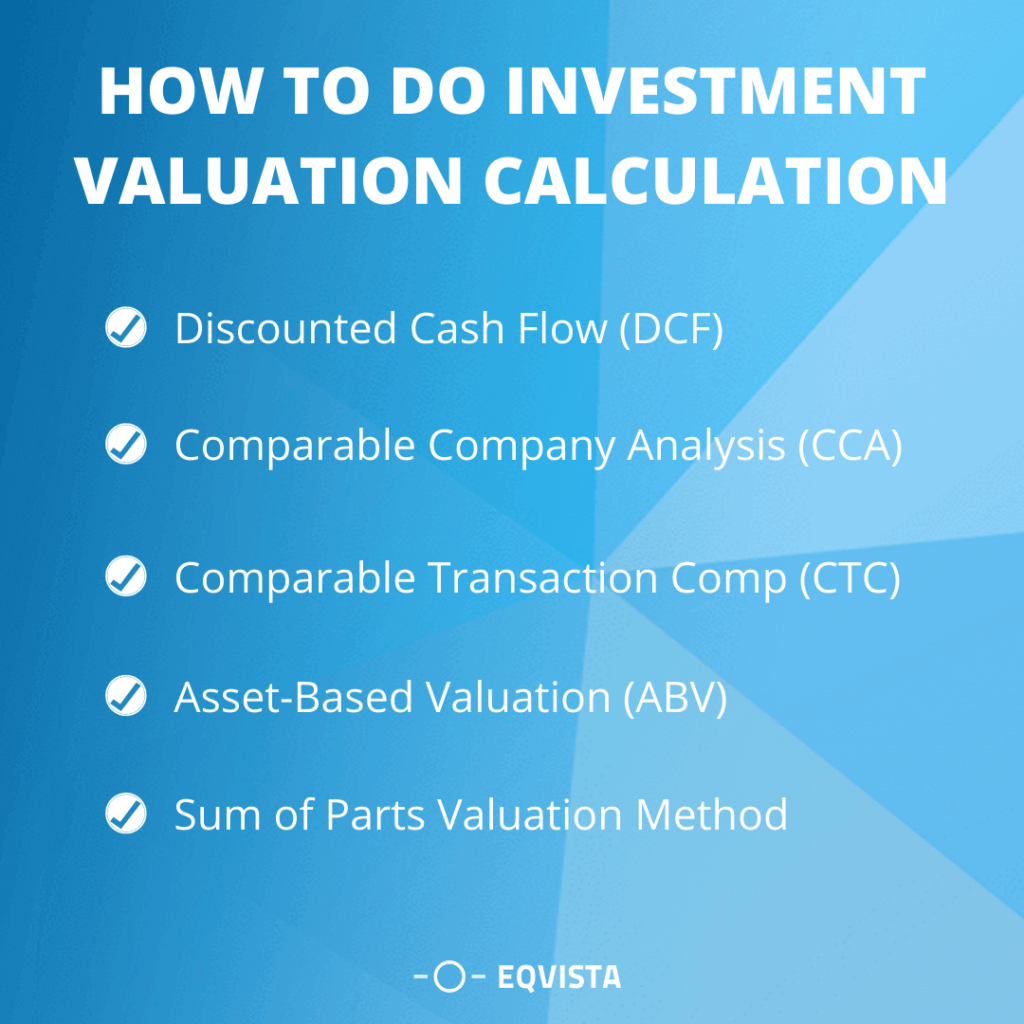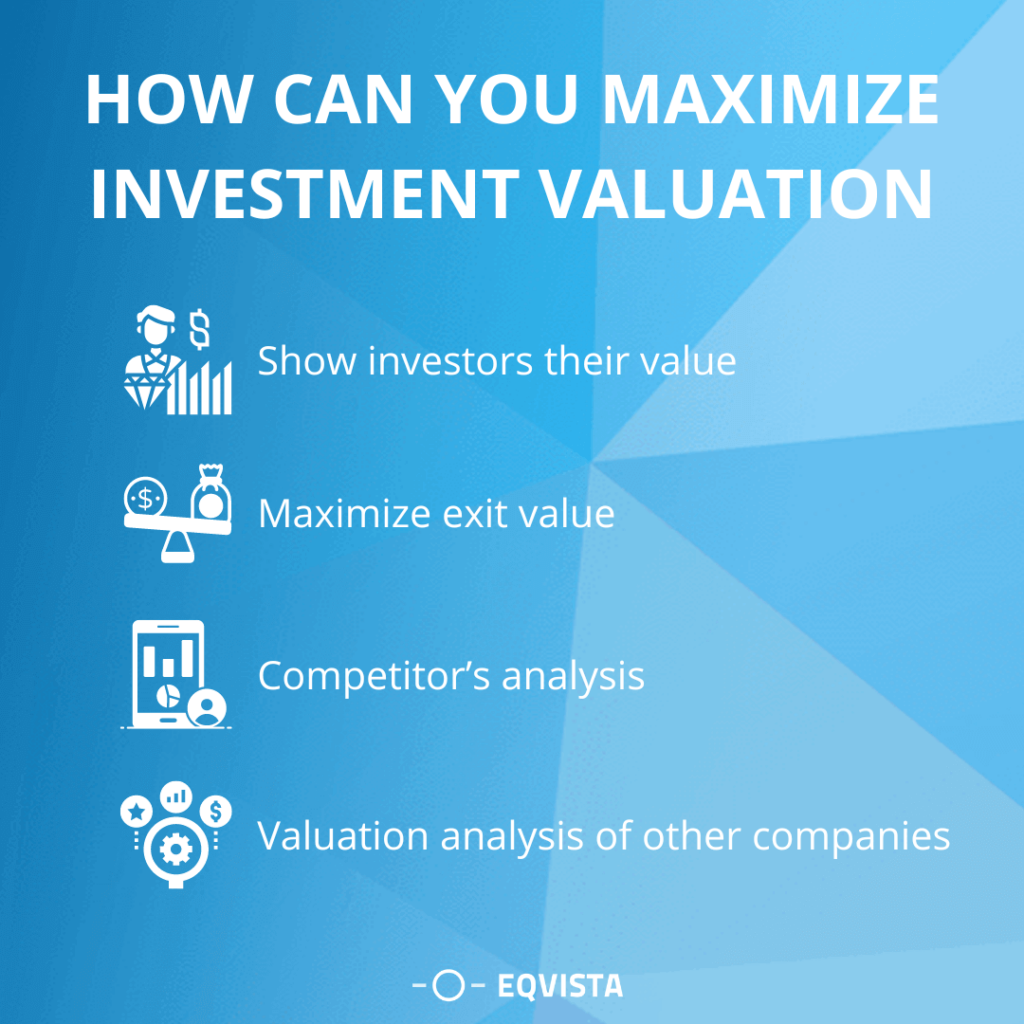Investment Valuation – Guide
This guide will explain all you need to know about investment valuation and calculation.
The fair value of a company or an asset can be calculated quantitatively through the process of valuation. You can use a variety of approaches and strategies to determine the worth of a product. Companies’ results and economic events can immediately impact valuations, requiring analysts to revise their models. Depending on the procedure, selecting the optimal financial investment valuation model can be difficult. This guide will explain all you need to know about investment valuation and calculation.
Investment Valuation in Business
The investor’s investment philosophy primarily dictates the function of valuation in portfolio management. In business, an active investor takes all decisions depending on a valuation, estimated or thorough. Valuation plays a vital role in every area of finance.
What is Investment Valuation?
Investment Valuation is the analytical process of determining the actual and projected worth of an asset or a company. A valuer placing a value on investment looks at the enterprise’s shares, equity, the prospect of future earnings, and the market value, among other metrics.
What is an investment valuation model?
There are two primary types of investment valuation models. The absolute and relative sectors. Absolute models try to value an asset by estimating future cash flows. They use math computations.
The “relative” methods compare an investment to similar investments based on market price analysis. They commonly compare price-to-earnings (P/E), price-to-book (P/B), price-to-sales (P/S), and price-to-cash flow (P/CF) ratios.
How does an Investment valuation model work?
The investment valuation model can be classified into relative and absolute models. The relative model uses comparison ratios to compare investments based on market price. In contrast, the absolute model attempts to find fair value based on an asset’s projected cash flow value.
There are three main investment valuation models, and each model has its own set of advantages and disadvantages:
- Dividend Discount Method (DDM) – One of the most basic “absolute” systems is the DDM. This method determines the value of an investment based on the dividends paid to shareholders by the company. It’s excellent for determining the value of an investment opportunity in a firm that provides consistent and predictable stock dividends. The idea is that evaluating the present value of dividend cash flows is a reasonable estimate of the value of the company’s equity shares.
- Discount Cash Flow Method (DCF) – When a corporation does not pay stock dividends or when payments are sporadic, DCF models are the best option. In this scenario, the model estimates and compares the company’s discounted future cash flows to other investments. The company must have consistent, positive, and predictable cash flows for this strategy to work. These are usually mature businesses that have passed through their normal growth stages.
- Comparable Method (CM) – The CM can be thought of as a “relative” valuation approach. This method is used instead when a discounted cash flow approach can’t be employed because the cash flows are negative or indeterminable. It can also be used to compute a range or average value of an investment instrument by comparing it to the DDM and DCF models. The CM analyzes company price multiples to an industry benchmark to determine whether the stock is undervalued or overvalued relative to other companies in the same industry. Similar assets should sell for similar prices, according to the logic.
Why do you need investment valuation?
An investment value is essential to potential buyers of a share, equity, and assets is to compare the cost to the anticipated rate of return. They can compare the investment’s final returns to the predicted amount they will pay for the company once they have determined the particular rate of return. It enables the investor to make informed purchases that are consistent with their investing goals.
How to do investment valuation calculation?
A single valuation approach cannot be applied to all situations because each situation is unique. Investors are not restricted to adopting only one strategy. It’s best to examine many ways to ensure you’re utilizing the most accurate and efficient model possible, given the aims of each investing decision.

Generally, In order to value a firm or corporation, financial analysts use a variety of valuation procedures, the most common of which is Cash flow discounted, comparable company analysis, comparable transactions, asset valuation, and the sum of the parts are some of the methods used to determine the worth of a company’s assets.
- Discounted Cash Flow (DCF) – Discounted cash flow (DCF) is a way of valuing an investment that is used to determine its value based on its predicted future cash flows. The net present value, internal rate of return, and capital accumulation comparison are all calculated using the DCF model. DCF analysis is used to determine the current value of an investment based on future cash flow estimates. This is true for investors making decisions about businesses or securities, such as acquiring a business or purchasing stock, as well as for business owners and managers making capital budgeting or operating expenditures decisions.
- Comparable Company Analysis (CCA) – A comparable company analysis (CCA) is a procedure for determining the worth of a business by comparing it to similar-sized enterprises in the same industry. Comparable company analysis is predicated on the premise that comparable businesses will have comparable valuation multiples, such as EV/EBITDA. Analysts collect a set of publicly available facts about the companies they are evaluating and then construct value multiples to compare them.
- Comparable Transaction Comp (CTC) – Comparable transactions are used to determine a takeover target’s fair value. The ideal comparable transaction is one involving a similar business strategy in the same industry. The takeover target’s fair value is determined by its most recent earnings.
- Asset-Based Valuation (ABV) – Asset-based valuation is a type of business valuation that focuses on the value of a business’s assets or the fair market value of the company’s total assets after deducting liabilities. The assets are appraised to determine their fair market value.
- Sum of Parts Valuation Method – The sum-of-the-parts valuation (SOTP) method is a method for assessing the value of a business by determining the aggregate value of its divisions if they were spun off or bought by another company. After correcting for the company’s net debt and other non-operating assets and expenses, the equity value is determined.
Investment Valuation vs. Market Value
Market value assesses the genuine value of an investment, based on the forces of supply and demand in a free market. It’s not the same as investment value, which considers a person’s specific goals, objectives, and requirements for the property. In contrast, investment value reflects the prospective value of an asset based on particular conditions. An appraisal method is used to determine market worth.
The value of the investment can be lower or higher than the market value. It is dependent on the current state of the property. If a buyer places a higher value on the property than an educated buyer, the investment value can be higher than the market value.
How does ESP affect investment valuation?
Earnings available to common shareholders divided by the number of common stock shares outstanding is the earnings per share (EPS) formula. The more earnings a corporation can create per share, the further valuable each share is to investors.
For stock valuation, analysts often use the price-to-earnings (P/E) ratio, which is computed as market price per share divided by earnings per share (EPS). The P/E ratio determines how pricey a stock is in comparison to its earnings per share.
How can you maximize investment valuation?
Investors will employ a variety of approaches to establish a valuation range. They will arrive at a maximum valuation based on their perception of future valuations and perceived competitiveness for the deal; nevertheless, you may always attempt to enhance the value by emphasizing certain points.

- Show investors their value – Remove any uncertainty or obstacle that the investor perceives as limiting the potential exit valuation by removing any question or barrier that the investor perceives as limiting the possible upside valuation.
- Maximize exit value – Demonstrate to the investor why your company has a high potential exit value. Don’t undersell what you have.
- Competitor’s analysis – Investors are always in search of businesses with prospects. Remember that all businesses refer to themselves as “prospects” so do well to discover what makes them unique. Analyze competitors’ strengths and weaknesses. Find an investor competitor. If your deal has competition, an investor will likely grant you a higher valuation.
- Valuation analysis of other companies – Learn about the valuations of other companies. Identify and comprehend the technical and commercial gaps that exist between your company and theirs. Then, in your business plan, concentrate on fixing these gaps.
Conclusion
Now that you know all it takes and all that matters, you won’t enter asset valuation discussions looking lost. Eqvista provides professional services that will help you meet your goals. We offer business solutions to help any enterprise grow through clearly defined policies and methods. Take more expert help for your investment and business valuations with Eqvista today.
Interested in issuing & managing shares?
If you want to start issuing and managing shares, Try out our Eqvista App, it is free and all online!
